Submitted by Varun Kumar
Dr Gauri Bharat On Why Architectural History Matters And Teaching During The Pandemic
India Architecture News - Apr 13, 2021 - 18:44 3313 views

The Master’s in Architecture for Architectural History and Theory (M.Arch AHT) at Centre for Environmental Planning and Technology (CEPT University), Ahmedabad, will open admissions shortly. The course has been pioneering in the pedagogy for research and writing work amongst the architecture community.
AHT especially focuses on helping students develop methods of architectural inquiry and present them in authored formats. The course has hence emerged as an exclusive program in India that trains potential built environment scholars. The 2020-2021 batch's course has been running virtually owing to COVID-19 measures. However, the AHT faculty accompanied by the alumni are spearheading the outreach to keep the unique course active among others, post the pandemic.
Selected alumni of the AHT course also become ambassadors of the program who establish relations and place the course's values in light. Besides, the course also shapes them to represent emerging communities in architectural literature. Dr Gauri Bharat, the Program Chair for Architectural History and Theory, and Associate Professor at FA-CEPT University speaks to us about the essence of the AHT course and why it is important. Dr Gauri Bharat is also an author who recently launched her book "In Forest, Field and Factory: Adivasi Habitations Through Twentieth-Century India".
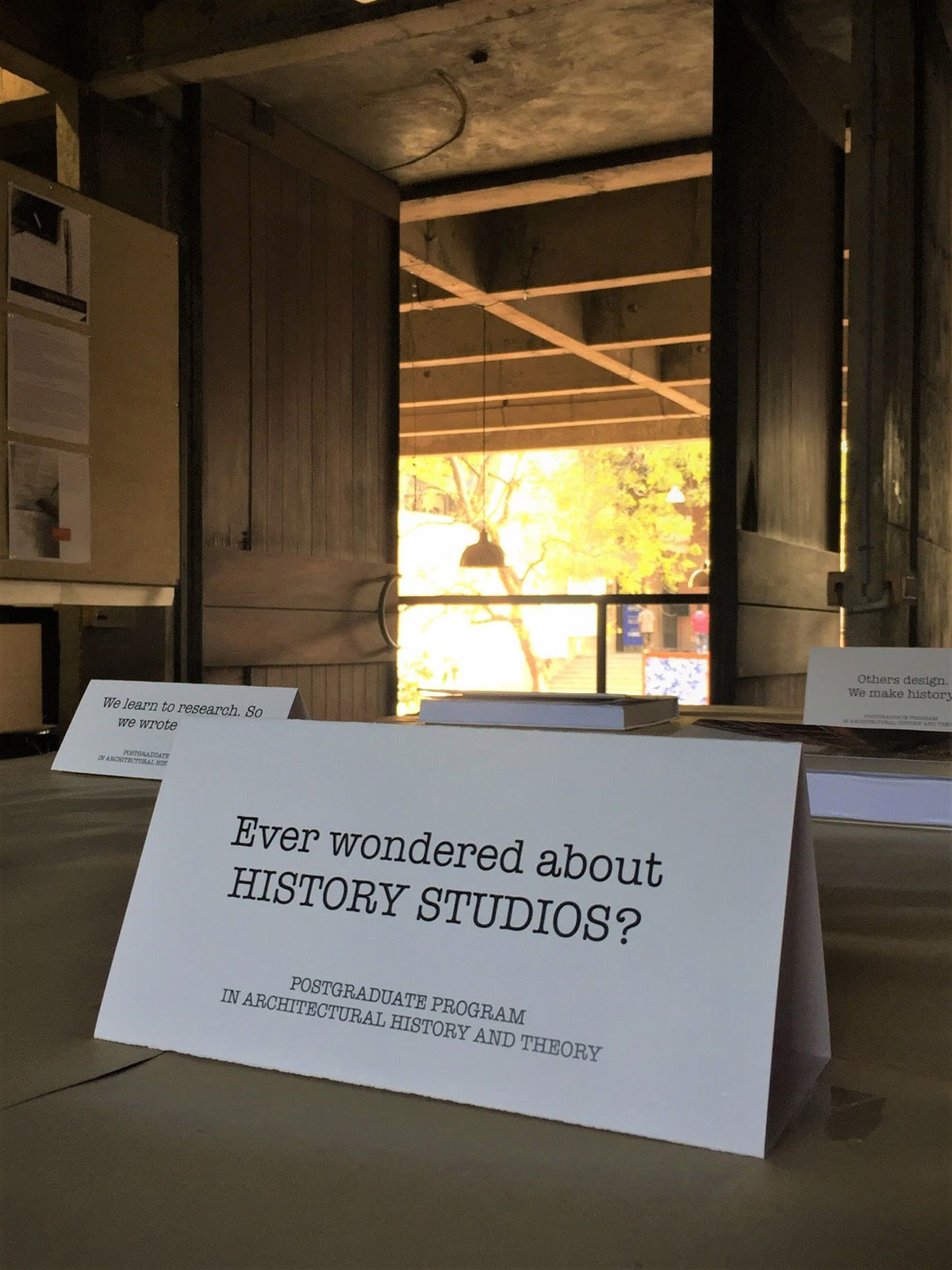
Semester-end exhibition of the AHT studio in CEPT in 2018.
Varun Kumar: When and how was the AHT course founded?
Gauri Bharat: We felt the need for a dedicated educational program for training architects to critically analyse, evaluate, and write about architecture. While design is a very important part of the discipline, almost equally important is the production of discourse - how do we talk about architecture? In what ways is it relevant to our individual and collective lives? What are the dominant and divergent ideas and approaches that characterize architectural practice? How have things changed over time? Where are we headed? These are all questions that can only be addressed when we take a broad view of the patterns that underlie practice and the built environment more broadly. CEPT has had a long history of research and documentation, and in 2014, we were ready to mobilise this into an educational program training the next generation of historians, educators and scholars of the built environment. We started as a M.Arch specialisation in 2014. Encouraged by students' responses and our graduates’ innovative professional work, we developed it into a full-fledged postgraduate program in 2018.
Varun Kumar: What are the goals and vision with which the AHT course was founded?
Gauri Bharat: Our goal is to train the next generation of historians, researchers and scholars of the built environment. There is a lot of state-of-the-art research about South Asia that is being conducted in universities and research centres around the world. Within India, however, this kind of research is few and far between. It is also an extremely uneven intellectual landscape - with some institutions drawing from the latest research and delivering high quality of education while many others struggle with basics. Under these circumstances, we felt it is crucial to create educational opportunities that match global standards but are accessible to local students.
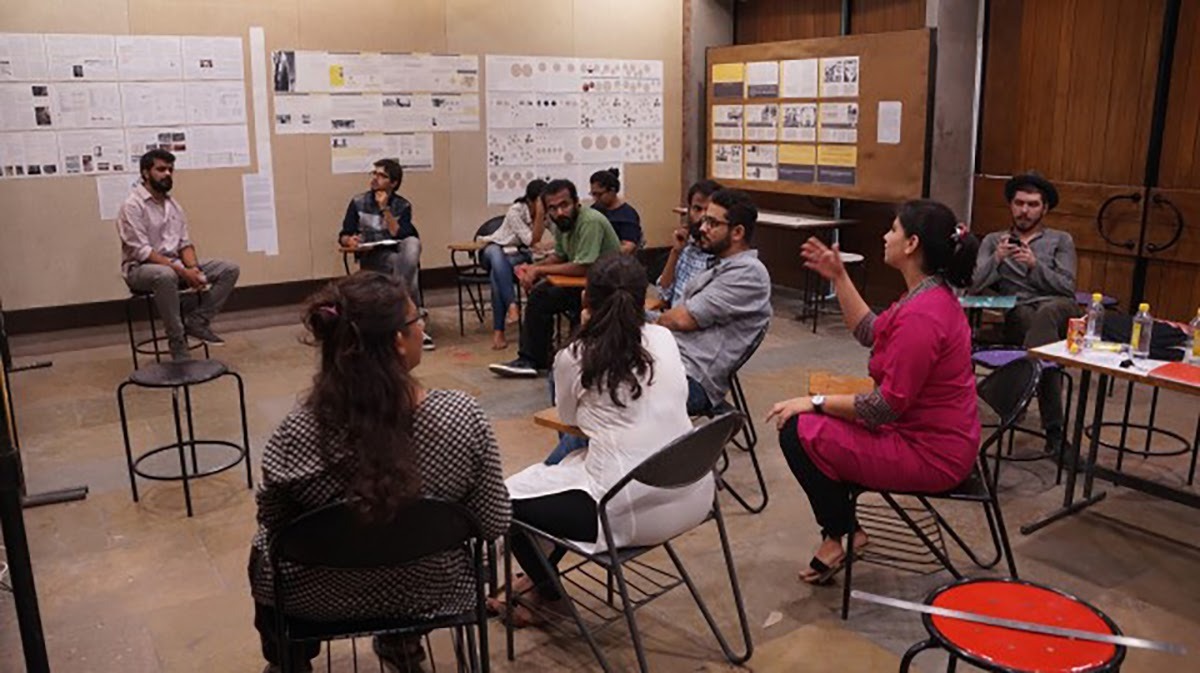
Discussions amid a mid-semester review jury.
Having said this, we are very conscious that our intellectual commitment cannot remain trapped in an ivory tower! So while we aim to expand the boundaries of academic knowledge, we also actively encourage students to engage with the domain of public scholarship. What this means is that students undertake projects on the latest debates in architectural history, while also considering the relevance of their work within fields such as undergraduate education, mainstream practice, and popular media. The question of the relevance of architecture to contemporary society has repeatedly been asked in recent times, and we are very conscious that this must be addressed through our pedagogy.
Varun Kumar: What skills does the AHT course help the students be equipped with?
Gauri Bharat: If I were to put it simply, we equip students with the abilities to investigate, interpret and communicate ideas about the built environment. To give a few examples in terms of what this means, they can research a given architectural work or place, assess the historic significance of sites or buildings, write about design projects, develop research proposals, carry out professional documentation, work with archival material, develop teaching material, curate exhibitions, or start a PhD! There is also a considerable range in terms of thematic content. Students are trained to investigate the histories of places, design practices, materials, while also engaging with contemporary debates in global and Indian architectural history. We cover this wide range in a way that balances exposure while also creating opportunities for students to dive deep into the topics that interest them and which they may wish to pursue further.
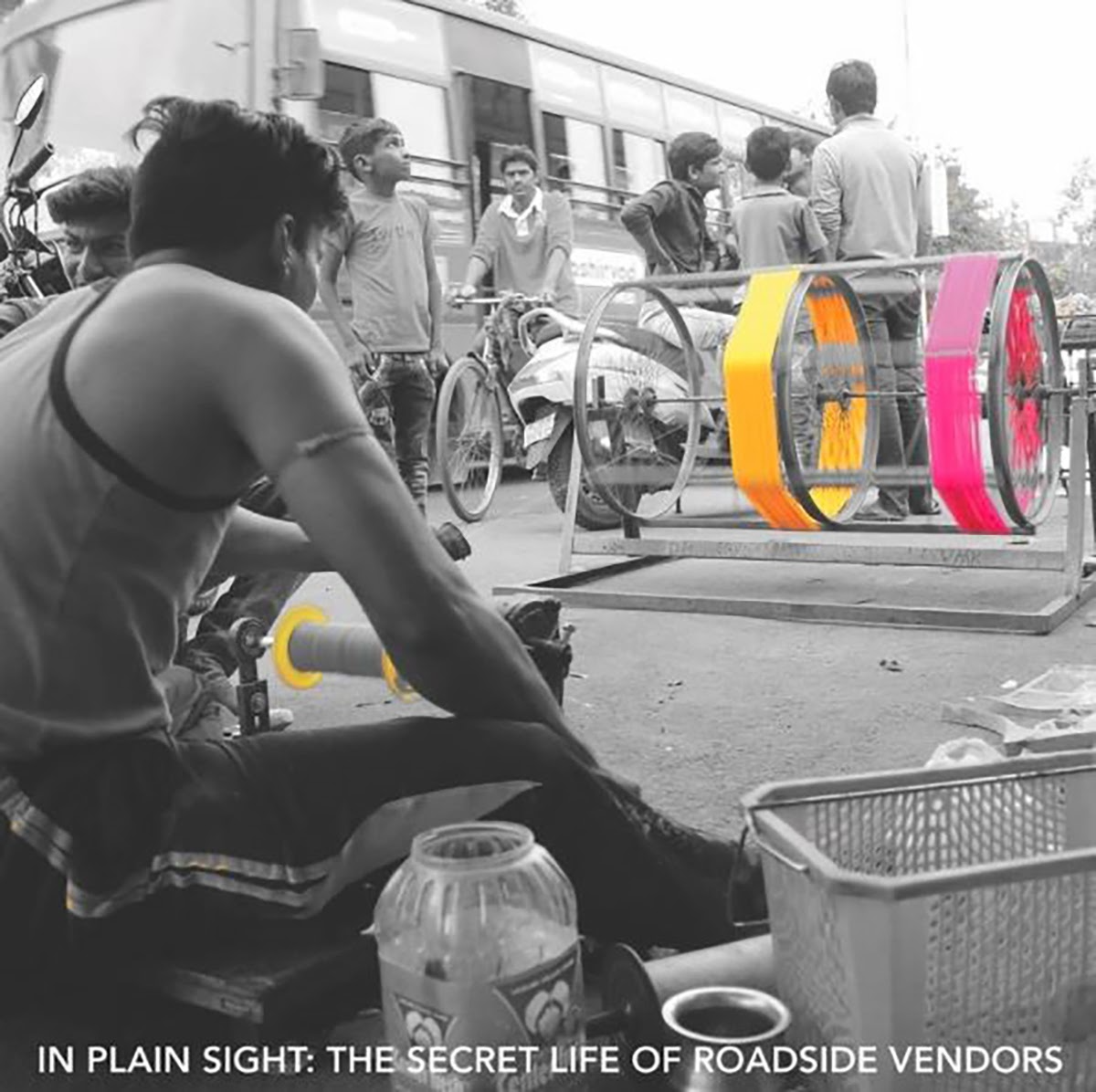
Student’s work: An image from a photo essay critiquing the design of civic streets.
Varun Kumar: How has the AHT course adapted into covid conditions? What interventions have been made to continue the teaching?
Gauri Bharat: This is an interesting question and I dare say this is going to be a long answer! COVID was a challenge, obviously, but it forced us to reconsider so much that we took for granted in terms of what and how we teach. The AHT program, like all of CEPT University, transitioned to online learning almost immediately in March 2020. In terms of content, a key shift was towards a purposeful engagement with digital platforms, media, and content such as online libraries, sources of information, digital visual material and so on. The more important shift, I think, was in terms of pedagogy. We were forced to ask - how do we teach and learn without the physical presence and support of our peers and facilities within the campus? How do we facilitate learning while students (and we!) multitask with domestic responsibilities and unfamiliar work environments and schedules? I don't think we - and I mean the wider education sector here - had given serious thought to the role environment and communities play in learning. At AHT, we decided to address this question to the extent we could digitally. We designed our studio and course engagements for a better balance between synchronous collaborative work and individual explorations. We had more flexible schedules, communicated much more, and hopefully more clearly about what we expected from students. We broke tasks down into smaller segments, with clear instructions and support at each stage. We also timetabled breaks and breathers into our formal studio schedule - we had buffer periods where we all worked offline and this allowed students to catch up on work or simply go slower for a while. We had film-watching sessions as part of the studio references, which served to relax while also contributing content for the studio! I will not claim that online learning was not difficult, but I do think that these strategies worked to a great extent. Students’ work demonstrated considerable learning and rigour of exploration. So much so, when I asked the students at the end of the last term about their experience of online learning, they said they had become very comfortable with it! What was more telling was the student feedback in the senior studio, where my colleague got a full score [10/10]! The modes of teaching and learning had struck some right chords.
Varun Kumar: What are the professional opportunities that students will be suited for upon completion of the AHT course.
Gauri Bharat: The professional space is shaping up as we speak! Several areas of works ranging from publishing to heritage concerns and the art and cultural sector have recently emerged and are expanding. Some of our graduates are working with such organisations. The other key area that is emerging is architectural practices interested in archiving, documenting and publishing their work and processes. Some practices independently hire AHT graduates with independent commissions while others have full-fledged research and communication departments. Some of our graduates also look forward to becoming professional writers and are engaged by digital platforms and the design publishing industry, for instance. And of course, academia attracts a lot of our students. Many of our applicants originally come intending to become architectural educators. Some continue on that journey while others diversify into the opportunities I mentioned earlier. I must add here that we have a robust network of alumni and students and, to give you a small example, we have exchanged more than one hundred opportunities such as job openings and calls for research funding in the past eighteen months.
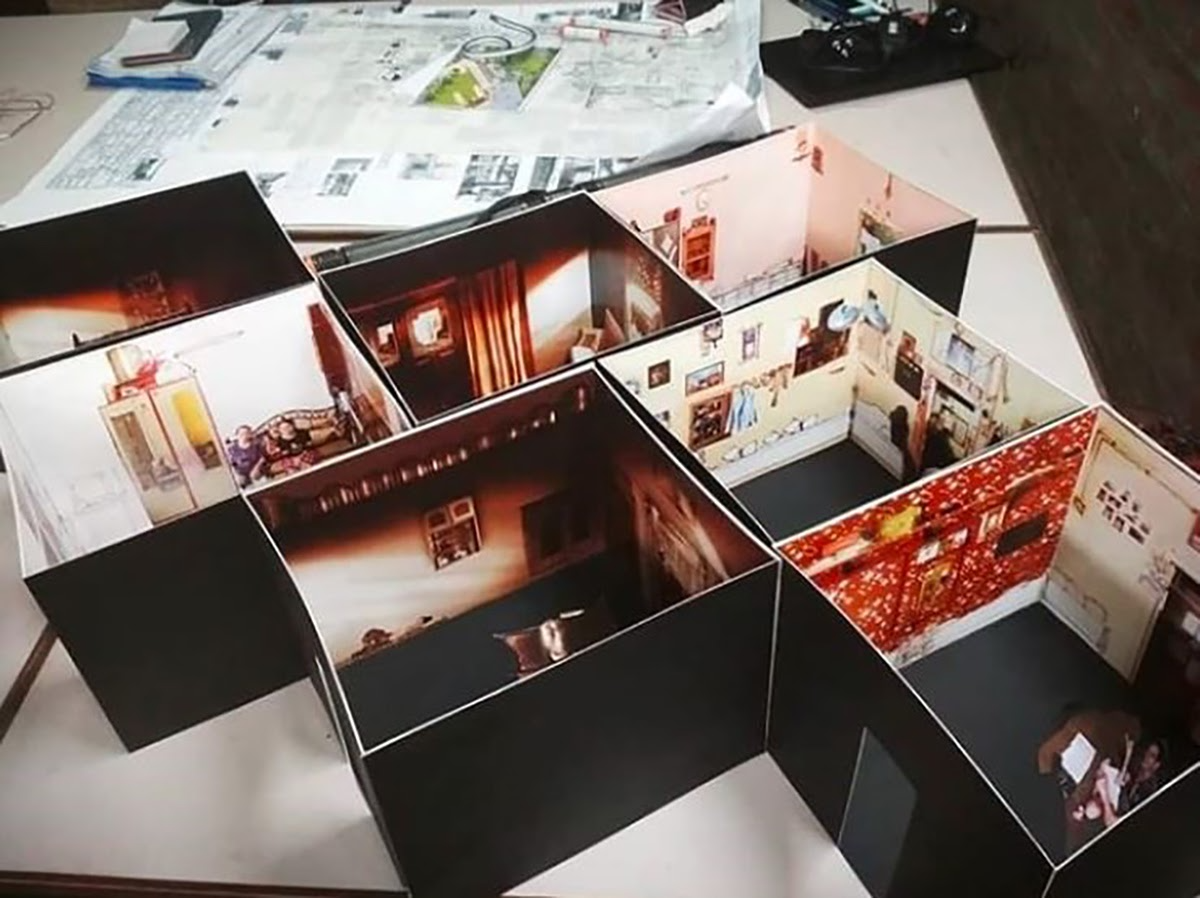
Student’s work: Using visuals and models as a tool for making sense of the built environment.
Varun Kumar: What are some pedagogical methods that may be unique to the AHT course.
Gauri Bharat: We have developed an innovative pedagogy that combines the best of design-based thinking and problem-based learning with deep exposure to the world of existing scholarship. Students work on live projects, such as sites where they have to first-hand construct a historical narrative or deal with complex questions of missing or incomplete archives to represent a particular place or time. These projects are very close to what an architectural historian’s practice would be like. Now, this hands-on learning is very unusual within the field of architectural history, which tends to be dominated by reading and writing. This is not to say that our graduates don't read and write! They have intensive seminars and lecture courses, in addition to reading deeply and widely about the topics that they work on in the studio modules. We have attempted to balance knowledge and ability. The advantage this kind of combined learning offers is that our graduates can work with primary material, that is, sites or architectural works about which not much may be written or known, and be able to advance some informed insights. As you may imagine, this positions our graduates to potentially expand the boundaries of architectural knowledge through their work.
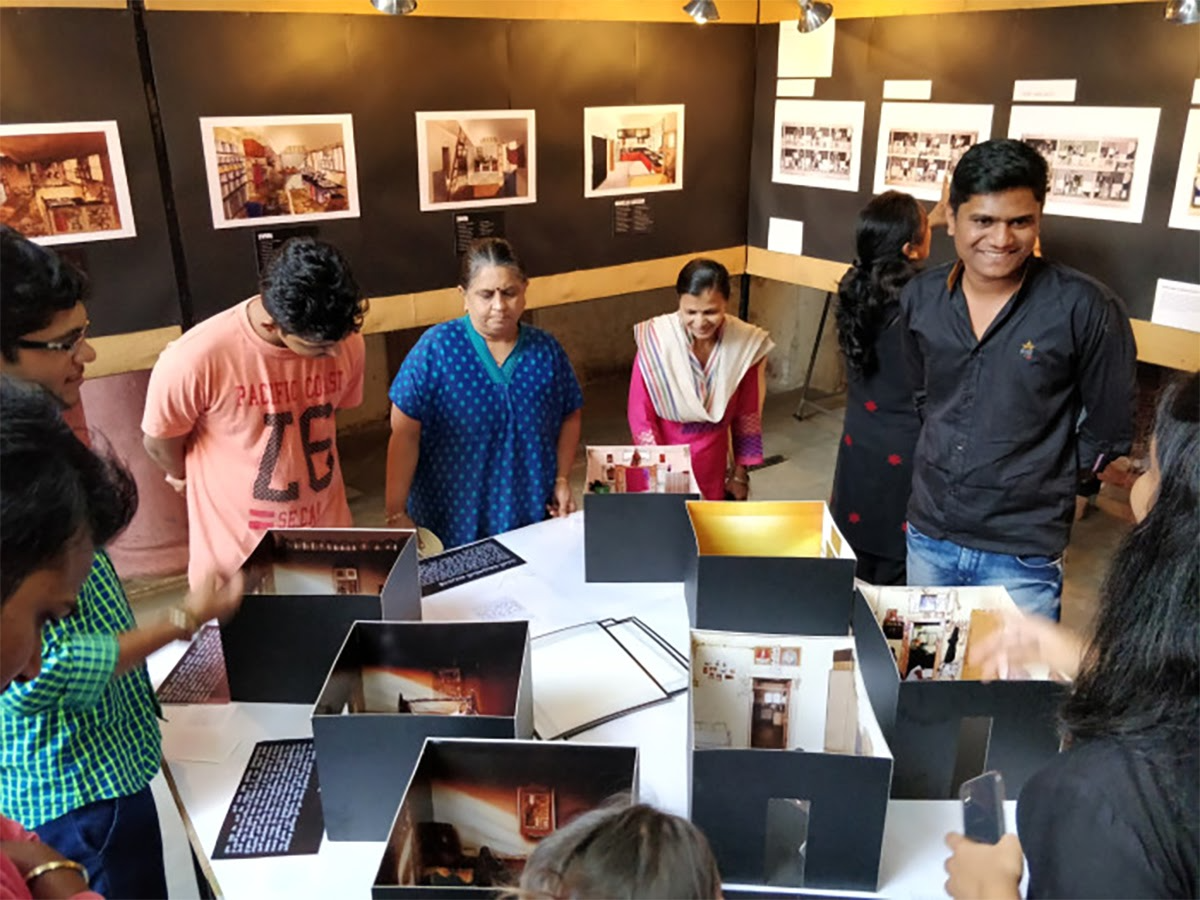
Community exhibition for residents, whose chawl was mapped and studied; Cotton Chawl, Ahmedabad.
The AHT course is a two-year M.Arch program. Head over to the CEPT Portfolio, to view work by students.
All images © CEPT AHT.
> via @cept_aht
